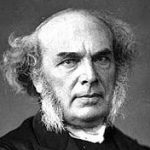Lesson Focus: This lesson can help you recognize and believe that Jesus is risen and that His resurrection changes everything.
Look for Jesus: John 20:1-4.
[1] Now on the first day of the week Mary Magdalene came to the tomb early, while it was still dark, and saw that the stone had been taken away from the tomb. [2] So she ran and went to Simon Peter and the other disciple, the one whom Jesus loved, and said to them, "They have taken the Lord out of the tomb, and we do not know where they have laid him." [3] So Peter went out with the other disciple, and they were going toward the tomb. [4] Both of them were running together, but the other disciple outran Peter and reached the tomb first. [ESV]
[1-4] One of the great historical evidences of Jesus’ resurrection is the empty tomb. But the remarkable and startling fact is that when Peter and John arrived at the tomb on the first Easter morning, it was not quite empty. The body of Jesus was gone, but something was still there: the graveclothes. Something about them so struck John that he believed in the resurrection. Significantly, this is the first time a disciple indicated belief in the resurrection. It is helpful to recap the events of that Sunday morning that brought Peter and John running to the tomb. Jesus had been crucified and lay in the tomb until the resurrection which took place before dawn on Sunday morning. At this point the women came to the tomb from Jerusalem bearing spices to anoint His body, now that the Sabbath was over. There were at least four women and probably more. Matthew says that the group included Mary Magdalene and the other Mary, that is, Mary the mother of James. Mark adds that Salome was present. Luke says that Joanna was also there as well as other women. These women started out while it was yet dark and arrived at the tomb in the early dawn when it was difficult to distinguish objects. On reaching the tomb the women were astonished to find the stone removed from the entrance. We must imagine them standing about, afraid to go too close and wondering what had happened. Who moved the stone? Had the body of Jesus been stolen? Had Joseph of Arimathea removed it to another place? What were they to do? As last they decided that the disciples must be told, and Mary Magdalene was dispatched to find them. Not one of them imagined that Jesus had been raised from the dead. After a while it began to grow lighter and the women grew bolder. They decided to look into the tomb. There they saw the angels. The women were afraid, but the angel calmed their fears by telling them that Jesus has risen. Then the angel instructed the women to go tell the disciples [Matt. 28:5-7]. Meanwhile, Mary Magdalene found the two chief disciples, Peter and John. The two disciples started for the tomb, running and leaving Mary far behind. Outrunning Peter, John arrived at the tomb first, stopped to look through the narrow opening, and saw the graveclothes. Then Peter arrived, out of breath and in a hurry; he brushed John aside and plunged into the tomb.
Examine the Evidence: John 20:5-10.
[5] And stooping to look in, he saw the linen cloths lying there, but he did not go in. [6] Then Simon Peter came, following him, and went into the tomb. He saw the linen cloths lying there, [7] and the face cloth, which had been on Jesus’ head, not lying with the linen cloths but folded up in a place by itself. [8] Then the other disciple, who had reached the tomb first, also went in, and he saw and believed; [9] for as yet they did not understand the Scripture, that he must rise from the dead. [10] Then the disciples went back to their homes. [ESV]
[5-10] When John first saw the graveclothes, he saw them only in a cursory manner and from outside the tomb. The Greek uses the most common word for seeing; it suggests nothing more than sight. But when Peter arrived, he scrutinized the graveclothes carefully. At this point John entered, saw what Peter had seen (this time a different Greek word is used for saw, meaning to see with understanding), and believed in Jesus’ resurrection. It is helpful at this point to know something about the modes of Jewish burial. Bodies were wrapped in linen bands that enclosed dry spices and placed face up without a coffin in tombs, generally cut from the rock in the Judean and Galilean hills. Many of these tombs exist today and can be seen by any visitor to Palestine. Another factor of Jewish burial in ancient times is also of special interest for understanding John’s account of Jesus’ resurrection. The body of Jesus was removed from the cross before the beginning of the Jewish Sabbath, washed and wrapped in linen bands. Seventy-five pounds of spices were carefully inserted into the folds of the linen. Aloe was a powdered wood like fine sawdust with an aromatic fragrance; myrrh was a fragrant gum that would be carefully mixed with the powder. Jesus’ body was encased in these. His head, neck, and upper shoulders were left bare and a linen cloth was wrapped about the upper part of his head like a turban. The body of Jesus was then lovingly placed within the sepulcher where it lay until sometime early Sunday morning. What did John see that caused him to believe in Jesus’ resurrection [8]? If we had been present in the tomb at the moment of the resurrection, we would have noticed either that the body of Jesus would have seemed to have disappeared or else that it was changed into a resurrection body and passed through the graveclothes and out of the sealed tomb just as it was later to pass through closed doors. What would have happened then? The linen cloths would have subsided once the body was removed because of the weight of the spices that were in them, and they would have been lying undisturbed where the body of Jesus had been. The cloth which surrounded the head, without the weight of spices, might well have retained its concave shape and have lain by itself separated from the body cloths by the space where the Lord’s neck and shoulders had been. This is exactly what John says he and Peter saw when they entered the sepulcher. John noticed that there had been no disturbance at the tomb. Peter saw what John had seen, but in addition he was struck by something else. The cloth that had been around the head was not with the other clothes. It was folded up in a place by itself. The Greek word for folded up means “wrapped together.” It appears to have retained its shape from being wrapped around the top of Jesus’ head. There was a space between it and the cloths that had enveloped the body. When John saw this he believed. John knew that the body was gone. It has not been stolen. It has not been moved. Clearly Jesus’ body must have passed through the cloths, leaving them as they saw them. Jesus must be risen. How foolish in the light of such evidence are non-Christian explanations of the events of Easter morning. Some have taught that the body of Jesus was stolen, but in that case the presence of the graveclothes is inexplicable. They would have been removed along with the body. Others have taught that Jesus revived in the tomb and escaped after having unwound the linen bands. In that case the linen would have been displaced. Even if we can imagine that Jesus replaced the clothes where they had been and somehow moved the stone, there is still a problem with the spices, for these would have been scattered about the tomb. Of this there is not the slightest suggestion in the Gospel. None of these explanations will do. The disciples saw everything in order, but the body was gone. Jesus had indeed been raised, and in a resurrection body.
Respond to Jesus: John 20:11-18.
[11] But Mary stood weeping outside the tomb, and as she wept she stooped to look into the tomb. [12] And she saw two angels in white, sitting where the body of Jesus had lain, one at the head and one at the feet. [13] They said to her, "Woman, why are you weeping?" She said to them, "They have taken away my Lord, and I do not know where they have laid him." [14] Having said this, she turned around and saw Jesus standing, but she did not know that it was Jesus. [15] Jesus said to her, "Woman, why are you weeping? Whom are you seeking?" Supposing him to be the gardener, she said to him, "Sir, if you have carried him away, tell me where you have laid him, and I will take him away." [16] Jesus said to her, "Mary." She turned and said to him in Aramaic, "Rabboni!" (which means Teacher). [17] Jesus said to her, "Do not cling to me, for I have not yet ascended to the Father; but go to my brothers and say to them, ‘I am ascending to my Father and your Father, to my God and your God.’" [18] Mary Magdalene went and announced to the disciples, "I have seen the Lord"–and that he had said these things to her. [ESV]
[11-16] Is there any story in all of literature more poignant than the story of Mary Magdalene’s meeting with Jesus in the garden on the first Lord’s day? But to understand it we have to put ourselves in the frame of mind of the disciples between the afternoon of Jesus’ crucifixion and the morning of His resurrection, and that is not easy to do. Our experience of Easter is one of faith and joy. But in the days that elapsed between Christ’s death and resurrection, those who were closest to Him were filled with the deepest disillusionment and gloom. They had been told of Christ’s resurrection, but they had not understood it. Therefore, when Jesus died, there is a sense in which they died also. For three years this mixed body of men and women had followed Jesus in His itinerant preaching ministry. They did not understand much of what He said. But they tried to, and what they did understand they believed. When Jesus died, their faith died, and they began to demonstrate the death of faith by scattering back to where they had been before Jesus had called them to discipleship. They had believed once, but it was over. Faith had died and hope had died. But there was one thing that had not died – love. For in spite of their cruel disillusionment and virtual despair, the disciples all still loved their Master and could not cease thinking of Him and grieving over Him. The great example is Mary of Magdalene. We will never understand the account of Christ’s appearance to Mary at the tomb unless we recognize that it was love, and only love, that brought her there. She had possessed faith once, as had the others. She had hoped. But now faith and hope were gone. Only love caused her to seek the body and held her close to the tomb. She determined to buy spices, and the other women agreed. They did this just before the shops closed for the Passover Sabbath. Then on Sunday morning Mary and the other women made their way to the tomb to perform their last services. Upon reaching the graveyard they noticed that the stone had been moved. It suited their purposes of wanting to anoint the body with the spices, but it was not what they had been expecting. So they stopped and asked themselves what they should do, at last they decided that the disciples, Peter and John, should be told. So Mary was either dispatched or else volunteered to tell them. While she was gone (and, therefore, unknown to her), the remaining women went forward, saw and heard the angels, and then rushed off in amazement to convey the angels’ message: He is not here, for he has risen, as he said [Matt. 28:6]. Shortly after the women had gone, Peter and John arrived, having received Mary’s message and then raced to the tomb. Where was Mary? She had been left behind by Peter and John as they ran ahead to the tomb. But that did not disturb her, for her mind was on Jesus. Quite naturally she set out for the tomb once more. I wonder if you can identify with the strain this woman was under. She had seen the person she loved most in all the world taken from her and brutally executed. She had planned to perform some last rites on the body, but this had been frustrated. She had been going back and forth from the city to the tomb in the dark or semi dark for what must have seemed hours. Now she arrives back at the tomb to find Peter and John and the other women gone. She is alone, totally deserted, and it is beyond her emotional capacity. She bursts out weeping. It is therefore with tear-filled eyes that she looks into the sepulcher and sees the angels who asked her why are you weeping? Mary answers: They have taken away my Lord, and I do not know where they have laid him. Mary is not startled by the angels, as the women who preceded her were. Perhaps she did not even recognize that they were angels. Having said this, she turned around and saw Jesus standing there. Mary did not recognize Jesus, even after He had spoken to her. Later when He presented Himself to the Emmaus disciples, they did not recognize Him either; so perhaps His appearance was changed. Besides, Mary was not seeing clearly, and she certainly did not expect the resurrection. Jesus said to her, “Woman, why are you weeping? Whom are you seeking? It was the voice of Jesus, but Mary did not recognize it. She imagined that the One speaking to her was the gardener. Mary answered in what is surely one of the most touching sentences in all human literature. Sir, if you have carried him away, tell me where you have laid him, and I will take him away. Mary was still thinking in terms of a dead body. At this point Mary must have turned her back on Christ once again; for later, after He had called her name, we read that she turned back to Him. She was not interested in the gardener. She had made her request of him in her grief and confusion. But her heart was still true to the Lord, and she turned back to the tomb where she had seen His body last. Jesus calls out her name, Mary. As Mary responded to His pronunciation of her name, she turned back to Christ again. When she had supposed Him to be only the gardener, she had no interest in Him or anything He might say. But now she had heard her name from Jesus’ lips and recognized Him and responded joyfully, Rabboni or Master. In that moment Mary experienced her own resurrection, for she was reborn. Faith had died, but now it came leaping from its tomb. Hope had evaporated, but now it gathered again around the person of the Lord.
[17-18] There are three new relationships in verse 17: a new relationship to Christ, a new relationship to the Father, and a new relationship to one another. Mary was now to know Christ as her risen Savior. After His ascension to the Father, she would know Him by the internal testimony of the Holy Spirit instead of in the flesh as she has done previously. This new relationship with Christ brings about a new relationship with the Father. While our relationship with the Father is analogous to Jesus’ relationship with the Father, it is nevertheless not identical to His. Jesus indicates this relationship in His statement to Mary: I am ascending to my Father and your Father, to my God and your God. While it has become true that God has now become our Father in a way that was not true previously, this is nevertheless not the same as Christ’s relationship to the Father. He is the Son of God in a unique sense, for He is God. We enter into an analogous relationship only because of what He has done for us through His atonement. What is involved here is our adoption into the family of God. We are not naturally born into God’s family. We are alienated from God and are born outside it as heirs of sin and death. But God is gracious; therefore, by the death of Christ and by the application of that death to us by the Holy Spirit, God brings us back into fellowship with Himself and grants us family privileges. What are these privileges? One is prayer, for access to God is based on our adoption. It is only because of our adoption that we can approach God as Father, and it is only through the Spirit of adoption that we can be assured that He is indeed our Father and that our prayers are heard by Him. A second and related privilege of our new relationship to God is that we can have confidence before Him. We are His children, and we can know that nothing can ever destroy that relationship. It is not only that Christians have a new relationship to God as a result of His act of adoption. They also have a new relationship to one another. Before, they were outside the family of God, each going his or her own way in opposition to and sometimes in only thinly veiled hostility toward each other. Now they belong to a new family and must love each other and work together as brothers and sisters. The story of Christ’s appearance to Mary and His commissioning her to tell the disciples of His resurrection concludes with the statement that she did what He told her to do. This is actually a record of the first announcement of the best news this world has ever heard. It was an announcement of the Lord’s resurrection. The resurrection is good news because of all that it proves. In the first place, it proves that there is a God and that the God of the Bible is the true God. Second, the resurrection proves the deity of Jesus. The resurrection is God’s seal on Christ’s claim to divinity. Then, too, the resurrection proves that all who believe in Jesus Christ are justified before God. How does this happen? Jesus had claimed that His death would atone for man’s sin. God’s has shown by the resurrection that Christ was sinless and that He has accepted His atonement. The resurrection of Jesus Christ also proves that the believer in Christ can have a supernatural victory over sin in this life, for Jesus lives to provide supernatural power to do it. Finally, Jesus’ resurrection is evidence for our own resurrection and of a life with Jesus in glory beyond the grave.
Questions for Discussion:
1. Follow the events surrounding Mary Magdalene in these verses. List all the things she misinterpreted or misunderstood on this Sunday morning. Then one word spoken by Jesus changed all this and enabled Mary to then see clearly the events taking place. Why did this one word make such a change in Mary when the previous words of Jesus spoken to her had no effect on her?
2. In verse 8 what did John, the beloved disciple, see and believe? What was the cause of his seeing and believing? What information does verse 9 add to this event?
3. What evidence do you see in these verses for the historical reality of Christ’s resurrection? How do these verses help you answer someone who claims that the body of Jesus was stolen; that He was not really resurrected?
4. Why is Jesus’ resurrection the key to the Christian faith [see 1 Cor. 15:12-19]? Why is the historicity of the resurrection and the empty tomb essential to defending the truthfulness of the Christian faith? Why does the resurrection separate Christianity from all other religions?
References:
The Gospel According to John, Leon Morris, Eerdmans.
John, Andreas Kostenberger, ECNT, Baker.
John, Robert Mounce, EBC, Zondervan.
The Gospel of John, volume 5, James Boice, Baker.

















